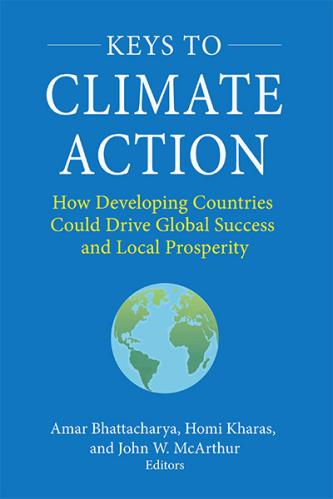While there may be disagreements on various issues pertaining to the gas sector – demand projections, scope of government intervention in the supply chain, etc. – there is no doubt that if India is to fully harness natural gas as a fuel/feedstock, laying of pipelines and the associated evacuation and transmission infrastructure will have to be stepped up to a magnitude that has hitherto not been scaled (see my previous article, Towards a rational market for natural gas, BS, December 17). The extant coverage of pipelines leaves a large number of potential consumers beyond the reach of promising sources of natural gas. India’s gas pipeline density of around 115km/MMSCMD (millions of standard cubic metres/day), compared to around 1000km/MMSCMD in Europe (and Pakistan!), is depressingly inadequate.
The preamble to the “The Petroleum and Natural Gas Regulatory Board Act, 2006” (hereafter, the Act) puts forward wide ranging motivation, and the legislation makes the regulatory agency, arguably, one of the more powerful among the central regulatory bodies for infrastructure. From my reading of the Bill this may be particularly so in the area of gas pipelines.
Before embarking on a discussion of the relevant legislation, it is apposite to ask whether the pipeline business requires regulation. With multiple players, competitive financial markets, large risk appetite, and multiple sourcing of gas, regulation motivated by a desire to “promote competitive markets” may be superfluous. Then again, conceptually it could be reasoned that entry barriers are too high (large requirement of capital) to prevent a “natural” monopoly structure to emerge in the pipeline arena. However, not too long ago, it was received wisdom that a fixed line telephone network was a natural monopoly, which has been shown to be spectacularly untrue. Frankly, the only limited resource in the pipeline business is safe and environmentally sound right-of-way. In a densely populated country where change in land use frequently evokes excitement, scope for multiple pipelines can be argued to be limited; still, it is unclear that pipelines are particularly land intensive, and right-of-way as a limited resource coming in the way of multiple pipelines may be a binding constraint only in cities. Another motivation for regulation could be the presence of a strong incumbent, who, especially if government-owned, may have the lobbying and financial muscle to prevent further entry. Presumably, reaction from private players has been muted because they expect that a level playing field is more likely to emerge with constitution of the regulatory board, against the backdrop of the Gas Authority of India Limited (GAIL) as a dominant player. It is noteworthy that GAIL’s track record in laying gas pipelines is truly underwhelming. The last (but unexceptionable) reason for regulation, is safety, but here existing agencies could design and monitor implementation of a safety code; a separate full fledged regulatory board is hardly required.
The Act recognises the following categories of pipelines: (i) common carrier for transportation of petroleum, petroleum products and natural gas by more than one entity as the Board may declare, or, authorise on a non-discriminatory open access basis; (ii) contract carrier for transportation by more than one entity subject to firm contracts for at least one year; (iii) city/local natural gas distribution networks; (iv) pipelines dedicated to supply to a specific consumer; and (v) those that carry crude. Of the above categories, (i), (ii) and (iii) will come for particular regulatory scrutiny.
The (contrived) separation of pipelines into different categories could merely engender attempts by pipeline companies to shoehorn their facilities into a specific category to avoid the consequences of these distinctions, leading to a higher monitoring burden on the regulator. It will not be surprising if owners of gas distribution networks in Delhi and Mumbai (who may also be suppliers of gas) will lobby to be “classified” in category (iv) enunciated in the previous paragraph.
In some respects, it would appear that the Board is in effect a licensing authority, which can solicit bids. When an application for authorisation from the board to lay down a pipeline is made, the Board may give “wide publicity” and “may invite applications from interested parties to lay, build, operate or expand such pipelines or city or local natural gas distribution network. The Board may select an entity in an objective and transparent manner as specified by regulations for such activities”. Just as bureaucrats find it easiest to sanction government-owned entities, it will not be surprising if the Board will find it least controversial to choose (or “authorise”) a public sector unit to lay a pipeline from among the applicants. The incentive for prospective operators to do the leg work for building pipelines will be blunted by the possibility of the Board opening up the process to other applicants.
The Board also has the power to declare an existing pipeline as a common carrier or contract carrier. On what basis will existing pipelines be designated for open access? It is anachronistic that in a liberalised era part of the motivation proffered for declaring an existing pipeline as common or contract carrier is “avoiding infructuous investment”! Are regulators better at evaluating viability than financial markets?
The Act avoids direct conflict between the central government and the Board. Pipelines (existing or planned) sanctioned by the central government will be deemed to have authorisation under the regulatory act. However, it would seem that the Board can tread on the leeway that has, in practice, allowed state government-sanctioned entities (mainly by way of public-private partnerships) to build transmission networks, for example, in Gujarat and proposed ones in Andhra Pradesh and Tamil Nadu. Asymmetry between central and state government sanctioned pipelines is baffling.
Globally, best regulation practices relate mainly to retail transmission since retail gas is considered to be a utility. Terms of carriage for pipelines to serve commercial customers should be through mutual contracting. Attempts to restrict access by incumbents or to cartelise can best be dealt with as a competition issue, with a light-handed monitoring of inter-connect terms.
The gas pipeline sector would have benefited from an approach that allowed for flexibility, explicitly doing away with monopoly rights, and tolerated freedom; in other words, make the sector truly contestable. The legislation seems to have deviated from this course by: (i) force fitting a distinction between different types of pipelines; (ii) possibly entrenching public sector incumbents as dominant players; and, (iii) undermining state-level initiatives that have already delivered and promise to do so more if allowed, rather than strangled, which is a real likelihood unless states take concerted action.
* The author is with Financial Technologies (India) Ltd., and is a Non-resident Fellow of the Brookings Institution. Disclosure: he is a member of the board of Gujarat State Petroleum Corporation. Views expressed here are personal and do not represent those of the organizations above.



Commentary
Op-edWill We Strangle Gas Pipelines?
January 4, 2007